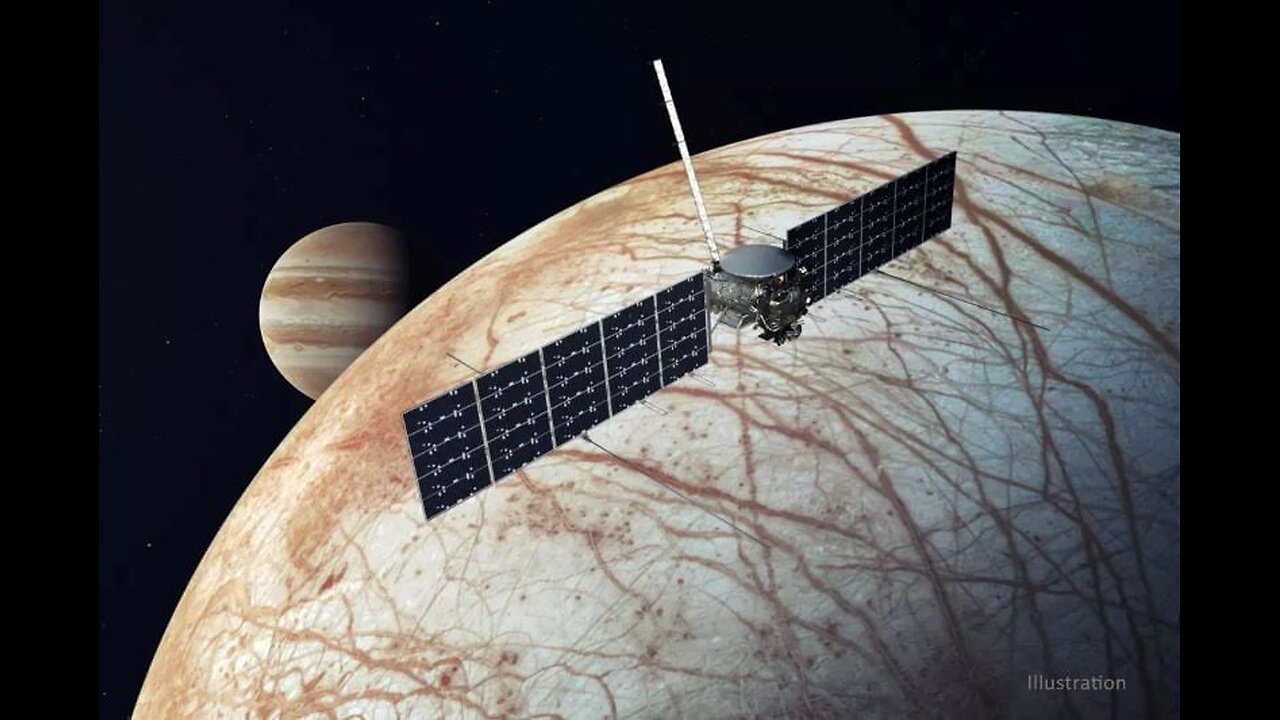Premium Only Content

NASA's Europa Clipper set for journey to Jupiter's icy moon aboard SpaceX Falcon rocket
The Europa Clipper is now on its 1.8-billion-mile, five-and-a-half-year journey to the solar system's largest planet. “NASA has officially retired a tremendous amount of risk on the mission,” said Jordan Evans, Europa Clipper project manager at NASA’s Jet Propulsion Laboratory.
Clipper’s journey will not be direct. It will receive a gravity assist by sling-shotting around Mars early next year, then boomeranging back around Earth in late 2026 before heading towards the gas giant and its dynamic moon. The spacecraft is scheduled to arrive in 2030 and will gather data for more than four years. At the end of the mission, Clipper will fly itself into one of Jupiter’s rocky moons to prevent contaminating Europa.
Originally set for October 10, the launch was postponed as Clipper spent the day secured in SpaceX’s hangar to ride out Hurricane Milton. On Monday morning, the skies over Florida’s space coast were clear, with only a few wispy clouds.
Scientists have long advocated for a Europa mission, particularly since NASA’s Galileo probe suggested that the moon likely possesses a subterranean global ocean, heated by Jupiter’s gravitational forces. “Scientists have urged NASA to search for signs of life near Jupiter. Now it’s happening,” added Evans.
With water, a heat energy source, and potentially organic compounds, Europa is considered a potential habitat for alien life. As Clipper orbits Jupiter, it will perform dozens of flybys of Europa, using its array of scientific instruments to study the moon’s subterranean ocean dynamics and search for organic compounds, which could indicate the presence of life.
The $5 billion Europa Clipper mission was designed and built by NASA’s Jet Propulsion Laboratory in La Cañada Flintridge, making it the largest planetary probe ever constructed by the agency.
SpaceX employed its Falcon Heavy rocket, a variant of the Falcon 9 with an extra booster strapped to each side, to launch the spacecraft. While SpaceX typically attempts to recover their boosters, this time they let them fall into the ocean, expending all their propellant to ensure Clipper's escape from Earth’s gravity. However, the fairings protecting the spacecraft during launch will be recovered.
“The community is really fortunate to have new rockets with these heavy-lift capabilities available to them,” said Matthew Shindell, planetary science and exploration curator at the Smithsonian National Air and Space Museum. “If you were trying to launch a mission like this a decade ago, you couldn’t do it.”
#NASA #Space #NASAmission #EurpaCipper #EuropaClipperlaunced
-
 2:01:55
2:01:55
MG Show
19 hours agoPresident Trump Multilateral Meeting with European Leaders; Trump Outlines Putin Zelenskyy Meeting
8.12K19 -
 10:59
10:59
itsSeanDaniel
1 day agoEuropean Leaders INSTANTLY REGRET Disrespecting Trump
6.81K13 -
 8:16
8:16
MattMorseTV
15 hours ago $6.14 earnedTrump’s name just got CLEARED.
57.5K56 -
 16:43
16:43
GritsGG
15 hours agoThey Buffed This AR & It Slaps! Warzone Loadout!
6.95K1 -
 2:05:30
2:05:30
Side Scrollers Podcast
19 hours agoEveryone Hates MrBeast + FBI Spends $140k on Pokemon + All Todays News | Side Scrollers Live
101K11 -
 11:06
11:06
The Pascal Show
13 hours ago $1.06 earned'THEY'RE GETTING DEATH THREATS!' Jake Haro's Lawyer Breaks Silence On Emmanuel Haro's Disappearance!
8.89K -
 LIVE
LIVE
Lofi Girl
2 years agoSynthwave Radio 🌌 - beats to chill/game to
360 watching -
 2:19:32
2:19:32
Badlands Media
1 day agoDEFCON ZERO Ep. 005: False Flags, Cyber Fronts & Global Power Plays
146K59 -
 2:35:23
2:35:23
FreshandFit
8 hours agoWhy Black Men Don't Date Black Women Debate
38.6K38 -
 2:03:42
2:03:42
Inverted World Live
12 hours agoBigfoot Corpse Coming to the NY State Fair | Ep. 94
108K27